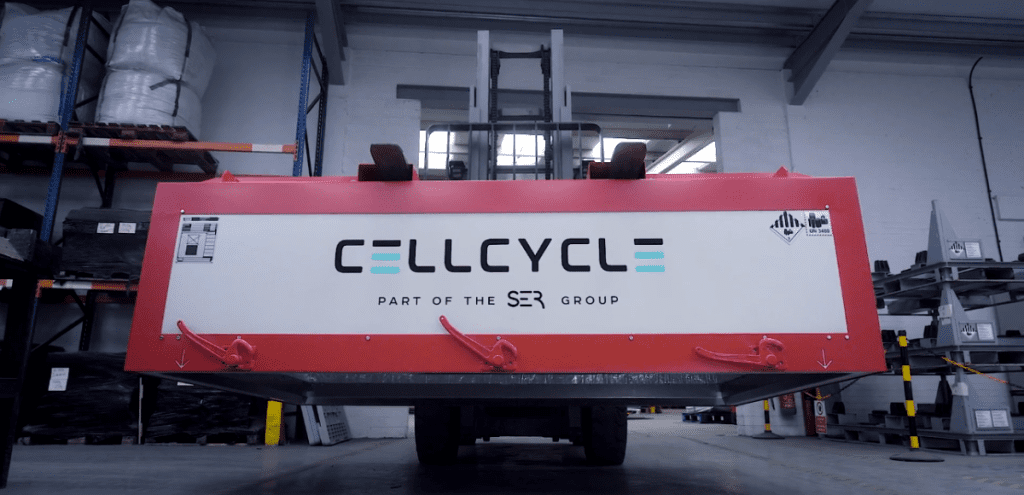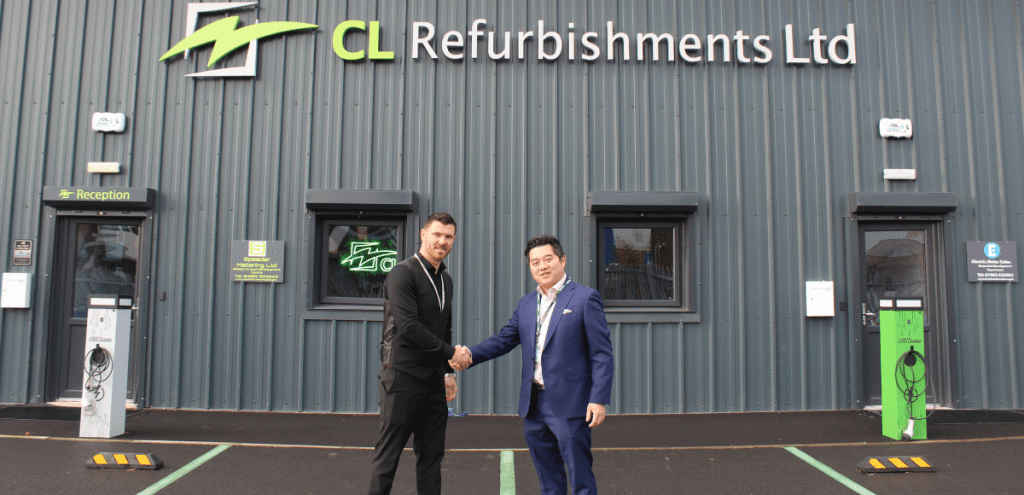Lithium-ion batteries have become integral to modern technology, powering everything from smartphones to electric vehicles (EVs). As the adoption of EVs and renewable energy systems grows, so does the need for effective strategies to manage batteries that have reached the end of their initial service life. With millions of lithium-ion batteries being discarded annually, ensuring their extended utility is critical for reducing environmental harm and conserving valuable resources. Reuse and repurposing offer unique opportunities to maximise the lifespan of lithium-ion batteries, enabling them to continue contributing to energy systems in secondary applications.
According to the International Energy Agency (IEA), “Second-life applications for EV batteries can provide up to 60% of their original capacity, making them ideal for stationary energy storage solutions that support grid reliability and renewable energy integration.” (IEA). Cellcycle remains dedicated to leading the way in this transformative journey, ensuring that every battery has the opportunity to unlock its full potential.
Understanding Reuse and Repurposing
The terms “reuse” and “repurposing” are often used interchangeably, but they represent distinct processes, each with specific goals and methodologies:
Reuse: This involves utilising batteries in their existing form, typically after minimal processing, for the same application they were originally designed for. For instance, a lithium-ion battery from an electric vehicle might be tested, graded, and then reused in another vehicle of the same type. This process prioritises efficiency and minimal intervention, making it a cost-effective and environmentally friendly option.
Repurposing: This process entails modifying or adapting batteries for a different application than they were originally intended. An example is taking a used EV battery and configuring it for use in stationary energy storage systems to support renewable energy sources. Repurposing often requires more significant alterations, but it allows batteries to be applied in a broader range of scenarios, extending their usefulness even after their initial purpose has been fulfilled.
According to the Faraday Institution, “reuse” refers to employing batteries in their original form for the same purpose, while “repurposing” involves adapting them for a new function. As noted in their report, “reuse strategies are an immediate solution to reducing battery waste, while repurposing broadens the scope of applications and extends the value of existing materials” (Faraday Institution).
Applications of Reused and Repurposed Batteries
Lithium-ion batteries from various applications, such as electric vehicles, energy storage equipment, and portable electronics, can find extended life through reuse or repurposing. Here are some key examples:
- Electric Vehicles (EVs): When EV batteries degrade to about 70-80% of their original capacity, they may no longer meet the stringent requirements for vehicle performance. However, these batteries can be repurposed for less demanding tasks, such as stationary energy storage, where they help balance energy supply and demand, integrate renewable energy sources, and provide backup power. This second-life application is increasingly common as it aligns with the push for sustainable energy solutions.
- Energy Storage Systems: Batteries used in large-scale energy storage can be reused in similar applications after appropriate testing and grading. Alternatively, they can be repurposed for smaller-scale storage solutions, such as residential solar systems or microgrids, contributing to grid stability and reliability. These systems are crucial for managing renewable energy inputs, which can be intermittent, ensuring that clean energy is available when needed.
- Industrial and Commercial Applications: Beyond energy storage, repurposed lithium-ion batteries are finding new roles in industrial settings, such as powering forklifts, uninterruptible power supplies (UPS), and other machinery. These applications often have lower performance requirements, making them ideal candidates for second-life batteries.
- Portable Electronics: While less common, some smaller lithium-ion batteries from consumer electronics are being reused or repurposed into power banks or other devices, providing a practical and affordable way to give these batteries a new lease on life.
Cellcycle’s Role in Battery Reuse and Repurposing
At Cellcycle, we are committed to extending the life of lithium-ion batteries through innovative reuse and repurposing strategies. Our comprehensive approach includes:
- Assessment: We conduct thorough evaluations of used batteries to determine their state of health (SOH) and suitability for reuse or repurposing. Our assessment process ensures that each battery is matched with the most appropriate application to maximise its utility and efficiency.
- Grading: Batteries are classified based on their SOH, ranging from Grade A (>90% SOH) to Grade D (50-70% SOH). This grading system allows us to channel batteries into suitable reuse or repurposing paths, ensuring optimal performance in their second life.
- Collaboration: By partnering with industry leaders and research institutions, we leverage cutting-edge techniques to maximise the value and lifespan of batteries, aligning with the highest standards of environmental responsibility. Collaboration enables us to stay at the forefront of technological advancements and implement best practices in our processes.
- Innovative Solutions: Beyond traditional reuse and repurposing, Cellcycle explores new applications for retired lithium-ion batteries, including hybrid systems that combine multiple second-life batteries for enhanced performance and reliability.
Through these efforts, Cellcycle plays a pivotal role in promoting sustainable practices and supporting the circular economy by giving lithium-ion batteries a second life. By providing tailored solutions for reuse and repurposing, we help reduce the environmental impact of battery waste while contributing to the global transition towards greener energy systems.
The Path Towards a Sustainable Future
By embracing reuse and repurposing, we can significantly reduce environmental impact, conserve valuable resources, and contribute to a more sustainable future. These practices not only align with global sustainability goals but also provide economic benefits by lowering costs for consumers and businesses alike. As the demand for lithium-ion batteries continues to rise, fostering a culture of reuse and repurposing will be critical to achieving a balance between innovation and environmental stewardship.


